Proton Exchange Membrane Fuel Cell (PEMFC)
$270.00 Student Discount
- The present problem simulates the a Polymer Electrolyte fuel cell using ANSYS Fluent software.
- We have designed the geometry using SpaceClaim software and created the mesh on this geometry using ANSYS meshing software. The mesh type is unstructured with 876,000 cells.
- Species Transport, Porous & Fuel cell and electrolysis models are used.
To Order Your Project or benefit from a CFD consultation, contact our experts via email ([email protected]), online support tab, or WhatsApp at +44 7443 197273.
There are some Free Products to check our service quality.
If you want the training video in another language instead of English, ask it via [email protected] after you buy the product.
Description
Proton Exchange Membrane Fuel Cell (PEMFC) CFD Simulation, ANSYS Fluent CFD Tutorial
Description
This project, which has been done by CFD numerical simulation method with the help of ANSYS Fluent software, a proton exchange membrane fuel cell is simulated. Fuel cells generate electricity through a chemical reaction and are less polluting than other power generation methods. In this project, a fuel cell is simulated from the PEMFC model.
The two-dimensional geometry of this project has been produced with SpaceClaim software. The length of the calculation domain is 220 mm, its width is 100 mm, and its height is 40 mm. The meshing of this project has been done with ANSYS Meshing software, and the type of elements is structured. Also, the total number of elements is 876,000.
PEMFC Methodology
In this project, the flow equations and the energy equation are solved. Several modules are used, including Species Transport, Porous & Fuel cell, and electrolysis. The flow channels carry a mixture of gaseous species, including oxygen, hydrogen, and water. The catalytic part consists of a porous medium with a porosity coefficient of 0.5 and contains mass sources, thermal energy, electrical potential, proton potential, saturated water, hydrogen, oxygen, and water.
The gaseous diffusion zone comprises a porous medium with a porosity coefficient of 0.5 and contains mass sources, thermal energy, electrical potential, saturated water, and hydrogen, oxygen, and gaseous water species.
PEMFC Conclusion
The present study aims to investigate the fluid behavior and thermal conductivity of a polymer fuel cell and its effect on the mass fraction of gaseous species and the amount of electricity produced in the cell.
After the simulation process, results are shown in the form of contours. The hydrogen and oxygen react, and this process leads to the electric current generation. The electrolyte membrane acts as a bridge between cathode and anode, and the catalytic layer boosts the transmission.
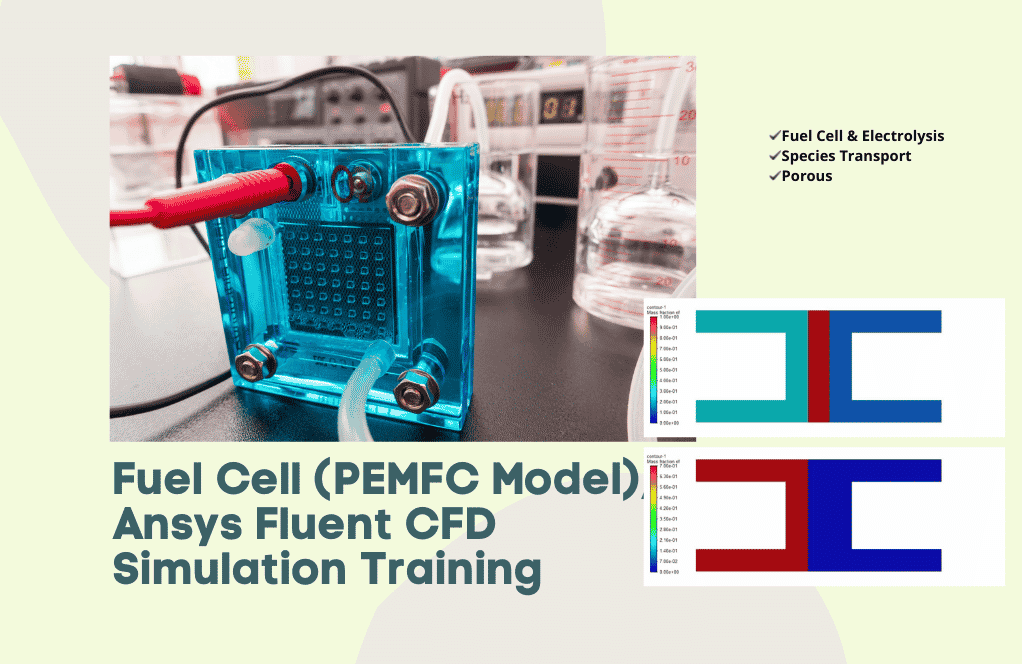
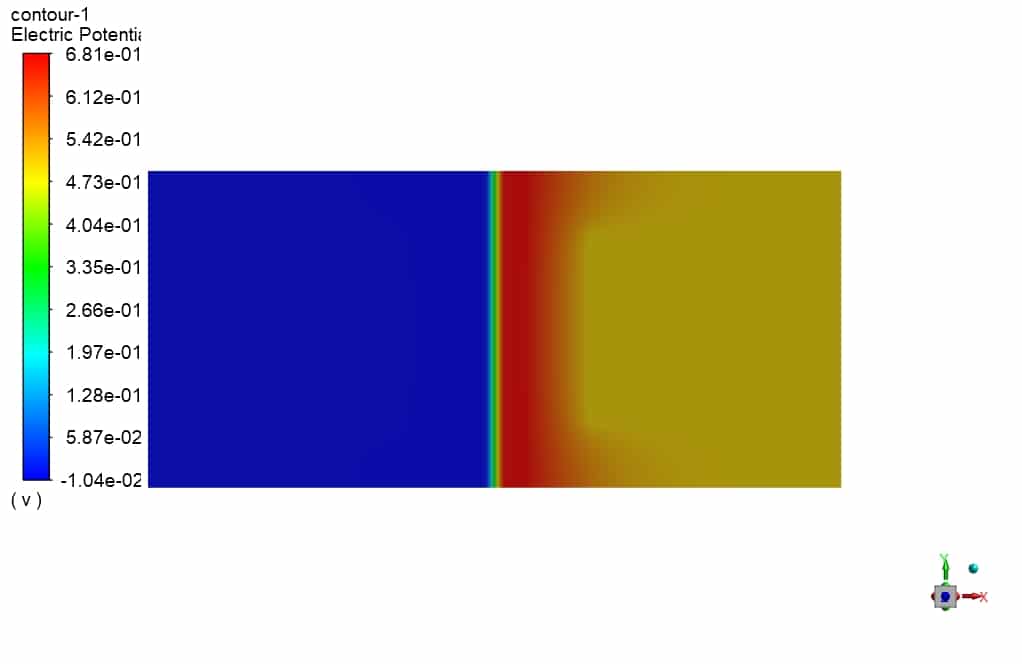
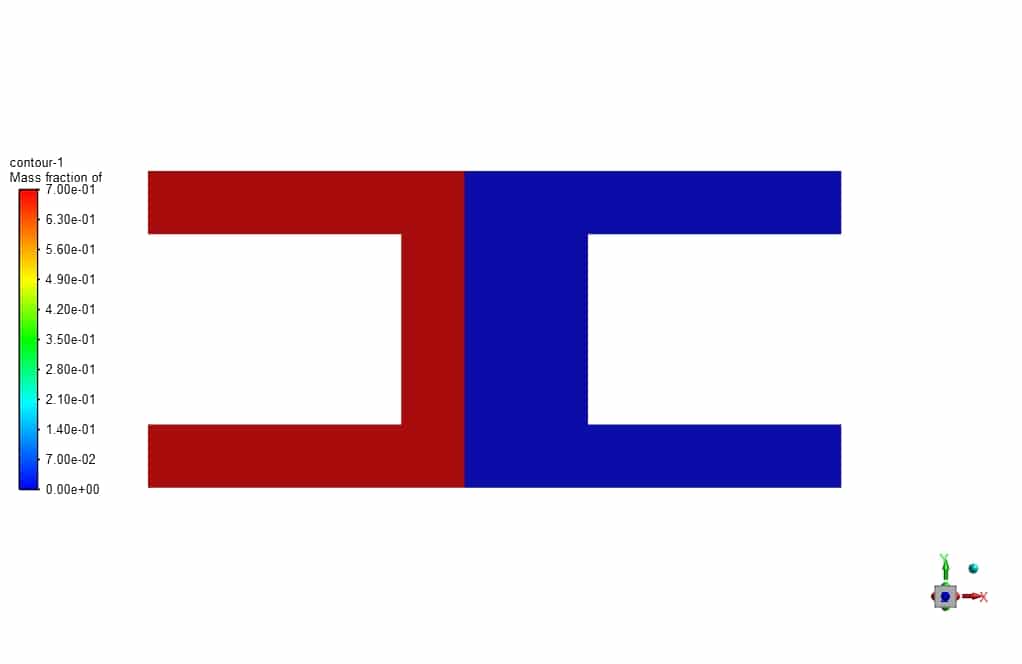

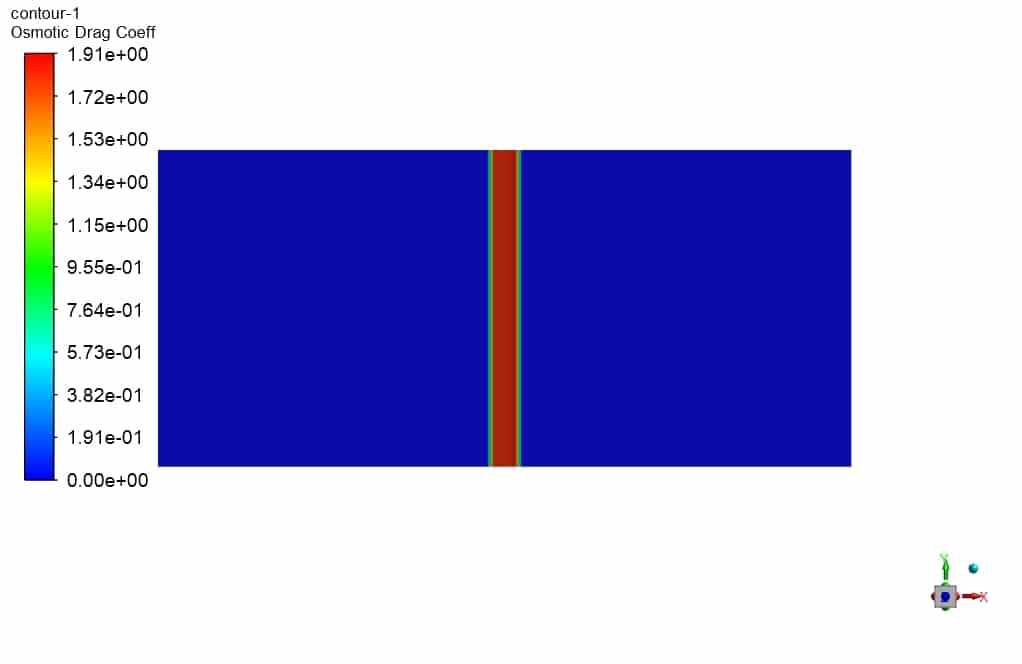
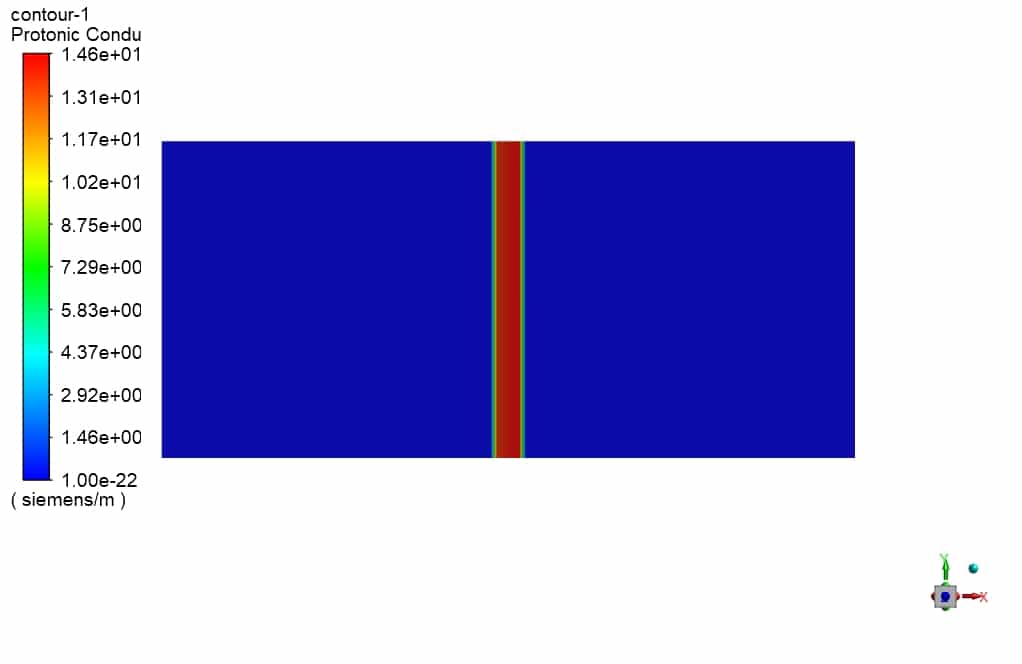
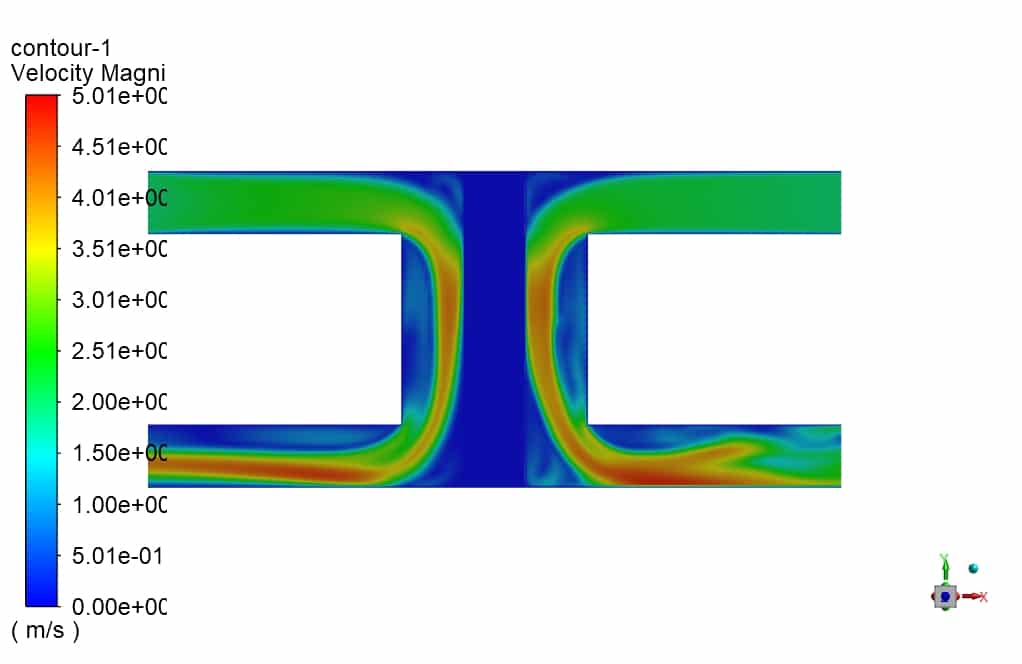
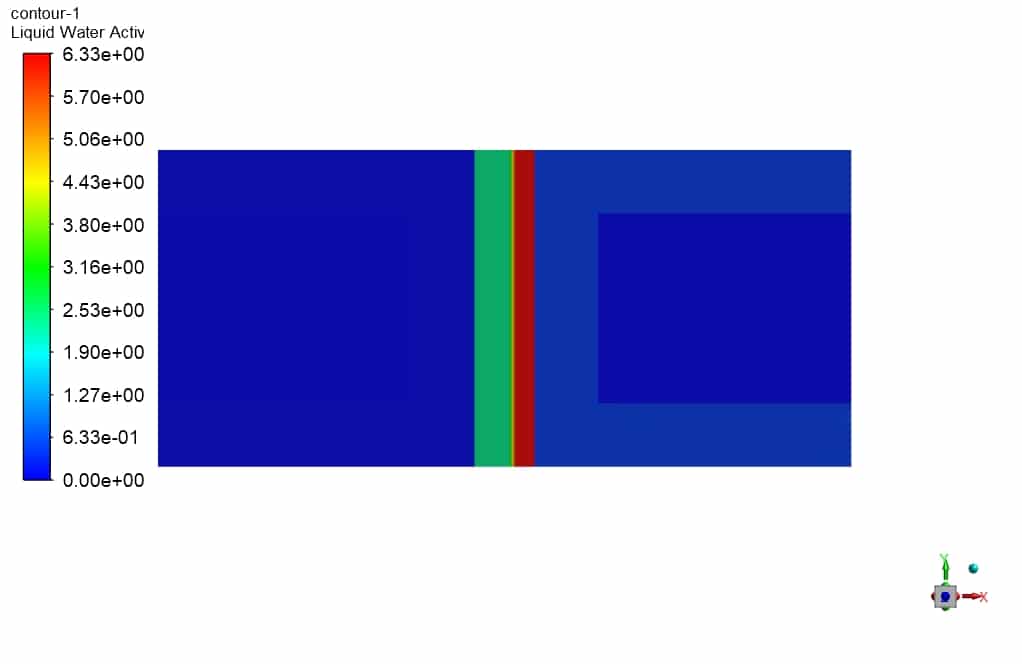
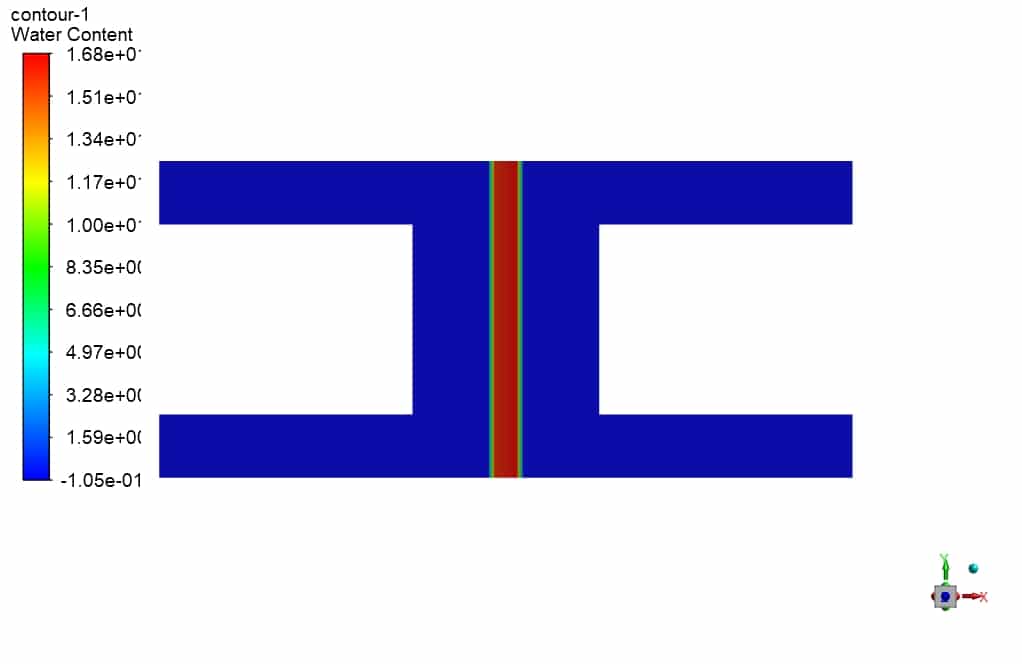
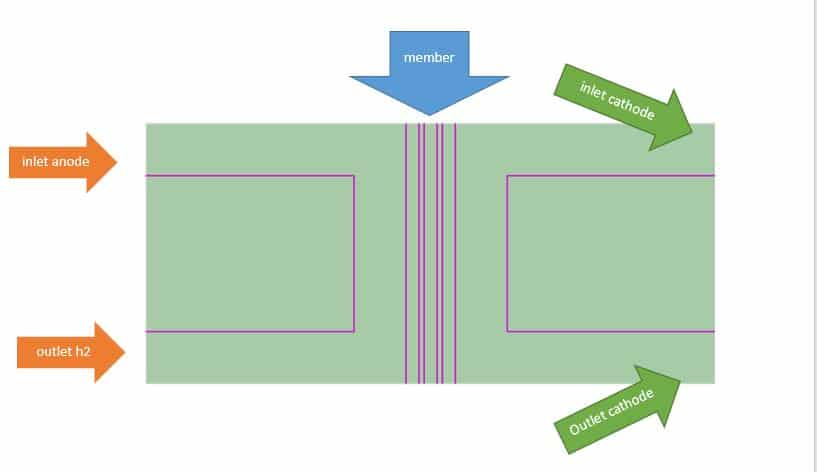
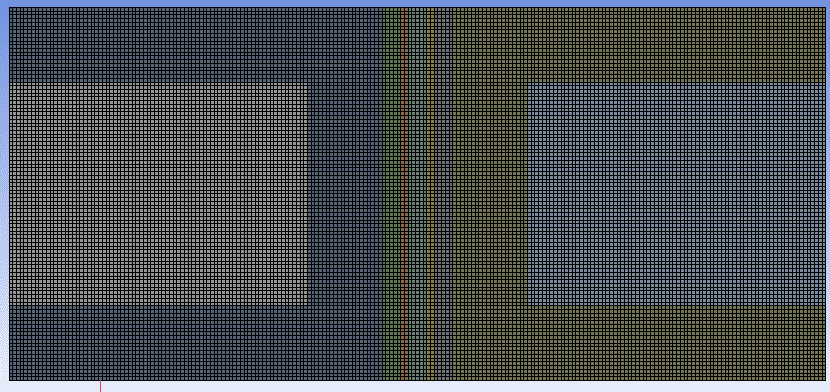
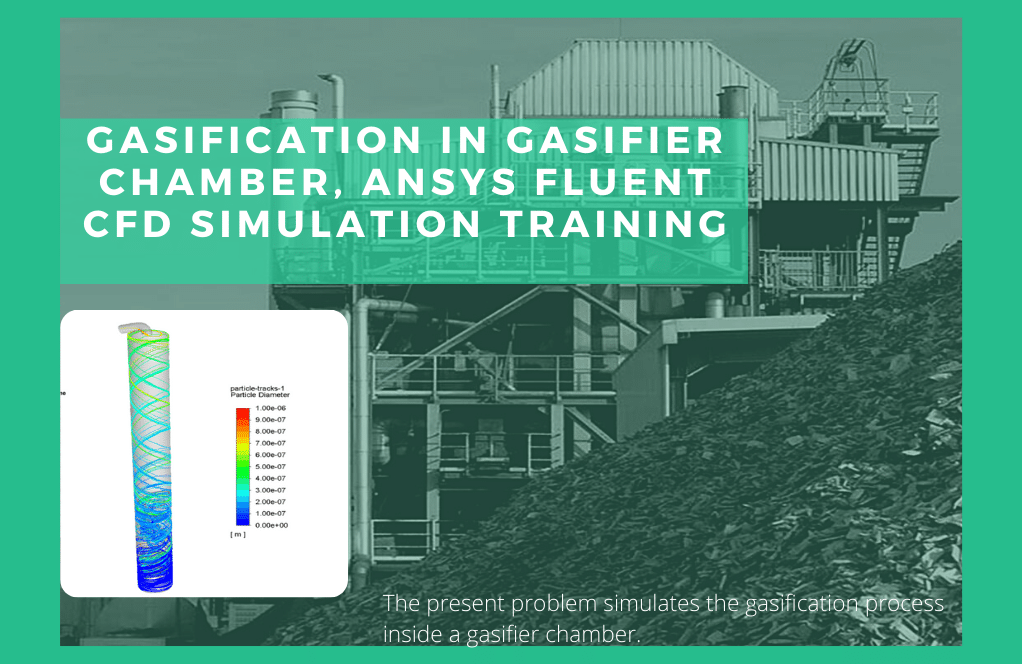
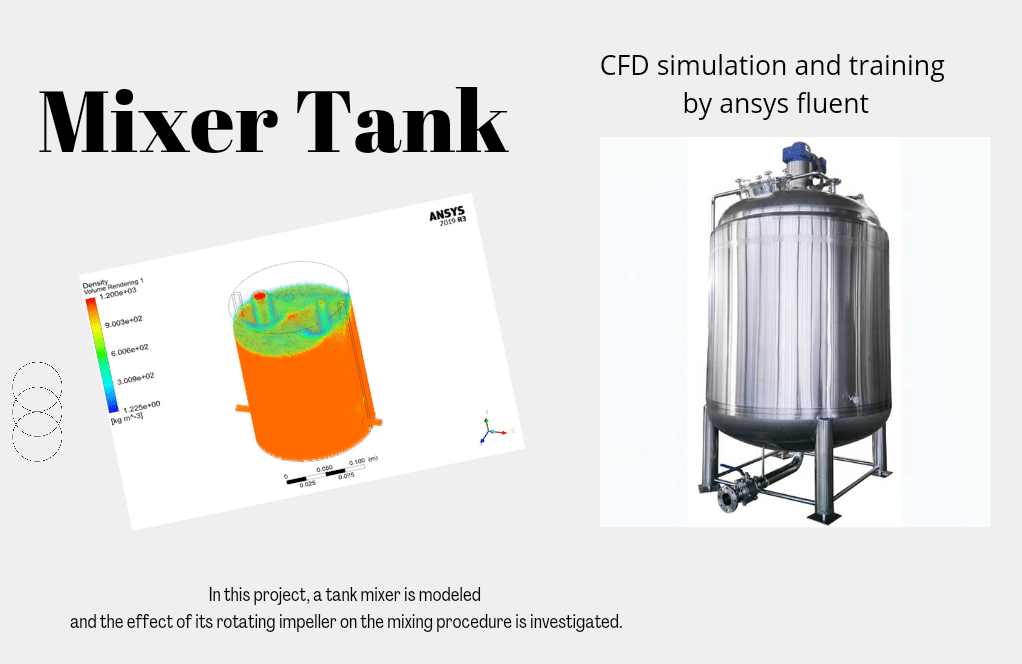

Jan Braun Jr. –
The explanation provided in-depth knowledge about PEMFC. Well-done MR CFD!
MR CFD Support –
Thank you for the positive feedback! We’re glad to hear that you found the information on the Proton Exchange Membrane Fuel Cell (PEMFC) insightful and helpful. It’s rewarding to know that our efforts to demystify complex processes through simulations are appreciated.
Cary Batz –
I found the tutorial very effective. It broke down complex PEMFC concepts into an understandable form.
MR CFD Support –
Thank you for the feedback! We’re pleased to know that our tutorial made PEMFC concepts clear and understandable. It’s our goal to provide educational resources that help users easily grasp CFD applications. We appreciate your thoughts!
Earnest Smith II –
The tutorial was superbly detailed, and I now have a deeper understanding of PEMFC. Is it possible to adjust the porosity coefficient in other simulations, and how would this affect the outcomes?
MR CFD Support –
Yes, it is certainly possible to adjust the porosity coefficient in other simulations. Changing the porosity impacts how easily fluids and gases can pass through the porous medium, thus altering mass transport, reaction rates, and ultimately electrical output. It’s important to match the porosity to the characteristics of the actual materials being used to obtain accurate results.
Winona Mosciski –
The product was incredibly insightful. The interplay between the fluid behaviors, thermal conductivity, and their impact on electricity production was complex, but this tutorial made it clear and easy to understand.
MR CFD Support –
Thank you for your kind words! We’re really pleased to hear that our tutorial on Proton Exchange Membrane Fuel Cell simulations was clear and insightful for you. It’s great to know that we could help enhance your understanding of the complex interactions in PEMFCs.
Anjali Mayert –
I really admire how the PEMFC CFD simulation tackles complex chemical processes and produces clarity in results! The methodology meticulously captures the intricate reactions within the fuel cell,
MR CFD Support –
Thank you for acknowledging the intricate details of the Proton Exchange Membrane Fuel Cell (PEMFC) CFD simulation. We take pride in providing comprehensive simulations that offer valuable insights. Your appreciation motivates us to keep delivering high-quality learning products!
Timmy Tromp II –
I’m incredibly impressed with the detailed insight offered in the PEMFC simulation! The structural elements and the focus on species transport make it clear that such a model would be immensely helpful for anyone delving deep into fuel cell design or optimization. Well done on creating such an advanced and educational tool for learning!
MR CFD Support –
Thank you so much for your thoughtful review! We’re thrilled to hear that the PEMFC CFD simulation tutorial proved advantageous to your understanding. Our goal is to provide high-quality educational tools, and it’s very rewarding to know that you appreciate the level of detail and learning potential in our simulations. Should you have any further feedback or questions while using our products, feel free to reach out!
Prof. Joshuah Senger –
The description of this project detailing the PEMFC is impressive. The integration of Species Transport, Porous & Fuel cell, and electrolysis modules must have given rich insights into the operation of fuel cells. I’d be curious to see how the simulation reflects gradients in species concentrations and thermal differences across the cell. It’s fascinating how such simulations contribute to the optimization of clean energy solutions.
MR CFD Support –
Thank you for recognizing the depth of our PEMFC CFD simulation! We’re glad you appreciate the complex interplay of species transport and thermal phenomena captured in our model. It’s through analyses like this that we can fine-tune the performance of environmentally friendly power generation systems. Thanks again for your kind words and interest in the electric current generation process within a PEMFC!
Autumn Sporer –
I’m thoroughly impressed by MR CFD’s PEMFC course – it was incredibly informative, and the tutorial was a great hands-on way to learn! Thank you!
MR CFD Support –
Thank you so much for your kind words! We are thrilled to hear you found our Proton Exchange Membrane Fuel Cell (PEMFC) course and tutorial informative and helpful. If you have any more feedback or need further assistance in your learning journey, please don’t hesitate to reach out.
Bridgette Bruen –
I found the modules very comprehensive in explaining the science behind PEMFC. The additional visual materials made it easier to grasp complex concepts. Kudos to MR CFD for creating a product that bridges technical knowledge and practical application seamlessly.
MR CFD Support –
Thank you for your positive feedback! We’re thrilled that our learning materials on Proton Exchange Membrane Fuel Cell made the complex concepts more palatable and helped improve your understanding. Your satisfaction is our top priority, and comments like yours validate the effort we put into our products. If you have any more insights to share, please don’t hesitate to reach out.
Garrison Legros –
I’m curious about the impact of the flow channel design on the fuel cell’s performance. Is there information on how the alteration of channel dimensions could affect the outputs like electricity generation and efficiency?
MR CFD Support –
In the simulation setup, alterations to the flow channel design will impact fluid dynamics and reactant distribution, which are crucial factors influencing PEMFC performance. However, the relationship is complex and requires further simulation studies to fully quantify the effect of changing channel dimensions on electricity generation and overall efficiency. These are typically addressed in sensitivity analysis or a parametric study within such simulations.
Prof. Kory Schiller Jr. –
I learned so much about PEM fuel cells from your tutorial! The step-by-step guide made the complex CFD simulation approachable and the results analysis provided deep insights into the behavior of the cell components.
MR CFD Support –
We are elated to hear that our PEMFC CFD simulation tutorial has been instrumental in enhancing your understanding of fuel cell behavior and CFD analysis. Your comprehension reflects the effectiveness of our learning material. Thank you for your positive feedback!
Prof. Helene Reynolds Sr. –
The structured mesh provided in the PEMFC project is incredibly detailed! It can really impact the simulation accuracy for fuel cells.
MR CFD Support –
Thank you for your positive feedback on the PEMFC CFD Simulation! We put considerable effort into ensuring our meshes are meticulously structured to capture the complexities of the fuel cell’s behavior. We’re glad you recognize its importance for achieving accurate results. If you have any further inquiries or need assistance with similar projects, feel free to reach out!